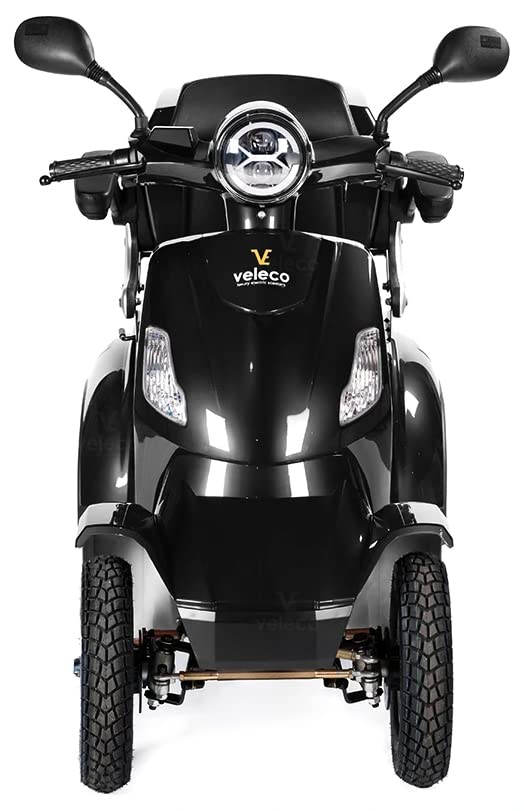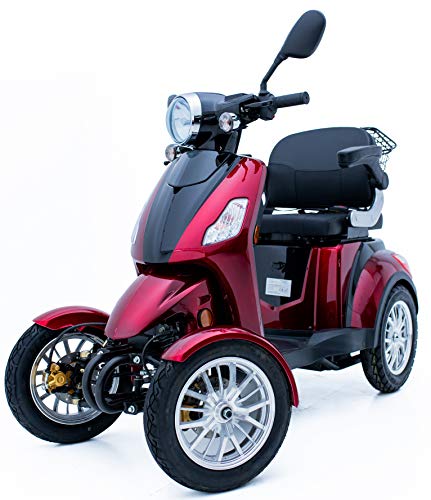The Ultimate Glossary On Terms About Electric Assistive Technology
페이지 정보

본문
 electric three wheel mobility scooter Assistive Technology
electric three wheel mobility scooter Assistive Technology By 2030, the number of people who require assistive devices will increase by a factor of two. These devices can be purchased in shops, modified (like adding tennis balls to a walker) or even custom-designed.
By 2030, the number of people who require assistive devices will increase by a factor of two. These devices can be purchased in shops, modified (like adding tennis balls to a walker) or even custom-designed.Assistive technology includes ergonomic kitchen appliances, such as OXO Good Grip and keyboards that are specialized. Other devices, like screen magnifiers, could be considered.
Functional electrical stimulation
Functional electrical stimulation (FES) uses small electrical charges to muscles that have become paralysed or weakened due to injuries, such as a stroke or multiple sclerosis. The electrical impulses cause the muscle to move normally. This treatment is able to enhance movement, like walking or grasping. It can also help improve the bladder, bowel, and reduce the risk of pressure sores.
Electrical stimulation can trigger responses in excitable cells, such as neurons, and has been used for years to treat a variety of ailments. Examples include cochlear implants to restore hearing, phrenic pacemakers to assist respiration, and systems that assist people in removing their bladder. It can also help reduce the tremors associated with Parkinson's. The electrical stimulation can be delivered through electrodes that are implanted in the body or positioned on the surface of the skin without cutting the skin. These electrodes are known as noninvasive or percutaneous electrodes.
The intensity of stimulation can be manipulated to achieve different outcomes. For instance, the amplitude of the stimulus may affect the type of nerve fibers recruited and the fibers that are closer to the electrode being targeted first. The duration of the stimulus is another crucial factor. This can affect the intensity of fatigue by impacting the duration that the muscle is stimulated.
FES isn't suitable for all. It can be effective in helping someone with an injury to their spine regain functional movements. It's not suitable for people who have uncontrolled epilepsy or a cancerous lesion on the area of the skin that is being stimulated, or who are oversensitive to the sensations of stimulation. It is also not recommended for those who have poor skin condition, as the self-adhesive electrodes can lead to irritation or pressure injury.
Power chairs
Power chairs are a type of motorized chair that uses an folding electric mobility scooters for adults motor and battery to assist with 4x4 electric mobility scooter. They can be maneuvered using a joystick or control system, and provide greater independence and access to the world for individuals who are unable to walk. They also let users travel for longer distances without having to rely on others for help. In addition, these devices can be customized and adjusted to accommodate specific user needs.
There are many different kinds of power chair that include portable electric mobility scooters for adults, indoor/outdoor, and mid-sized. Portable power chairs are lightweight and fold down to fit in small spaces. They are great for daily home use, or for riding shorter distances. Mid-sized power chairs offer a balance between flexibility and durability, whereas indoor/outdoor power chairs are designed to be used outdoors, but can be adjusted to suit indoor conditions. Indoor/outdoor chairs may have grippy tires to assist with maneuvers over kerbs and they may also include a kerb-climber.
Assistive technology is a vital device for people with physical limitations. It can range from store bought solutions, such as voice recognition software to more specialized seating options that enhance the user's comfort and independence. The most advanced assistive technology is usually more expensive, but offers advanced features and customization capabilities that are ideal for a wide range of user needs.
To find the ideal solution for your specific needs, it is best to seek a professional opinion by a physician or a physical therapist. They can suggest the ideal device for you, and help you choose the right size and demonstrate how to use it. They will also be able to assist you in choosing accessories and integrate the device into your daily routine.
Railings
Often referred to simply as handrails railings are placed diagonally on stairs or ramps to offer a sturdy grasping point for people who are on the incline. To prevent accidents, the majority of building codes have rules regarding the height and spacing of handrails. Handrails can be made into an easy-to-hold shape or constructed out of materials that are simple to hold. Handrails that are functional and meet ADA regulations include the finger recess on one or both sides. They must also be strong enough to withstand 200 pounds of force.
Handrails can also offer tactile guidance for those with visual impairments. They can aid them in navigating the stairs. Handrails allow individuals to feel the number or steps as well as landings, curves, and stairs by dragging their hands along them. Handrails can be used to direct people away from danger during emergency situations.
Electronic pillboxes
The electronic pillbox is an intelligent device that helps seniors remember their medication. The electronic pillbox uses audio and visual reminders and triple alarms, to make sure seniors take their medication at the correct time. This technology can help reduce medication errors which are a leading cause of death for seniors. It also helps stop fatal overdoses.
The device is made up of a medicine container that has different compartments for each day and weekday times and a sensor powered by batteries with a mobile data connection worldwide as well as speakers and LEDs to notify users via audio or visual signals when the pills are due. This device is designed for patients who frequently take many vitamins or medicines as well as caregivers in hospitals and retirement homes.
In the simplest version the sensors of the pillbox are integrated inside the lid. They monitor the condition of the lids for the subcompartment. The sensors are triggered whenever the user opens a lid, and a signal is sent to the microcontroller. The signal is then timestamped and stored in the memory cache that is circular to the 18LF252 microcontroller.
The system can be easily programmed by using an external Arduino board that controls all the various components. The Arduino board will be in charge of emitting sound and light signals for the pillbox in order to notify the senior that a pill has to be taken and wirelessly transmitting the message to the caregivers. The acoustic and light signals will remain on for a short period of time, then bleep every 10 s until the senior is able to interact with the device. The pillbox will then release the pill, and the LEDs and internal speaker will shut off.
- 이전글Guide To Medication For ADHD And Anxiety: The Intermediate Guide In Medication For ADHD And Anxiety 25.04.04
- 다음글How To Save Money On Volkswagen Car Keys 25.04.04
댓글목록
등록된 댓글이 없습니다.

